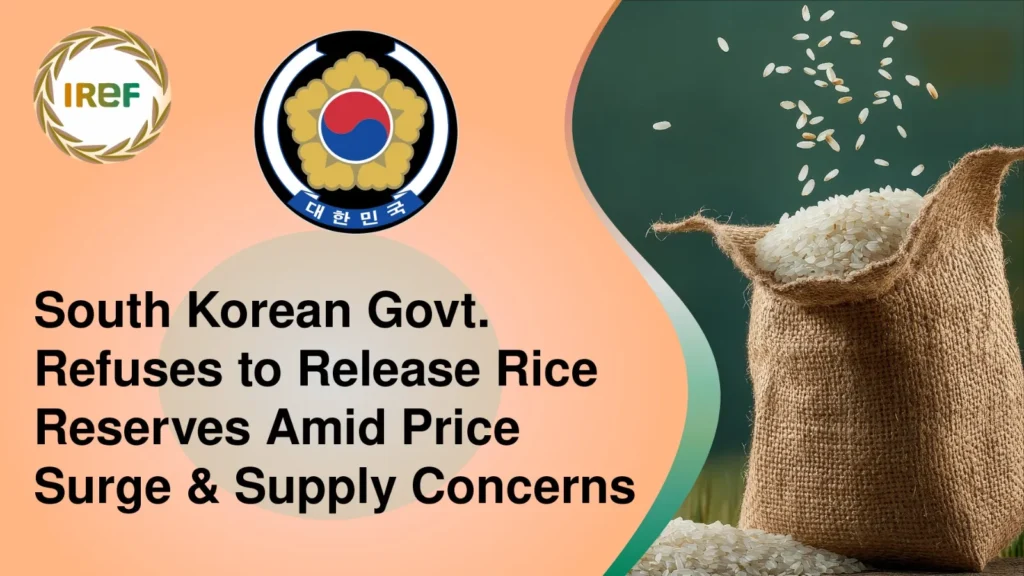Rice prices in South Korea are at almost all-time high with the average retail price of rice surpassing 60,000 South Korean Won (KRW) per 20kg. Adding more woes to the situation, conditions as of now in South Korea indicate that there is a shortage of rice stocks in the market. Moreover, with the Chuseok holiday approaching in the next month, the possibility of rice prices rising further in South Korea has increased. The significant rise of rice prices in South Korea is prompting opinions that the government should release reserve rice.
However, as per the sources the government has not yet decided to release the reserve rice. Rather as an alternative the govt. is issuing discount coupons. The discount coupon by the govt. is a measure to alleviate the burden on households as it provides a 3,000 South Korean Won (KRW) discount on the purchase of one bag of 20kg rice at large supermarkets. However, despite these measures the criticism has emerged that the government’s rice reserve policy is not functioning as intended.
Price of 20Kg Rice Exceeds 60,000 South Korean Won & May Further Increase Amid Holiday
According to the Korean Statistical Information Service (KOSIS), the rice price index in July was 109.7, depicting an 11% increase compared to the same month last year. The upward trend is more clearly visible in consumer prices, where a 20kg bag of rice is being sold for more than 60,000 KRW in the market. The average retail price of 20kg rice was recorded at 60,256 South Korean Won (as of September 1), which further depicts an increase of more than 17% compared to the same period last year.
The upcoming Chuseok holiday early next month is expected to cause rice prices to surge further in South Korea. As the Chuseok holiday is one of the most important festivals in South Korea where families honour ancestors through memorial services and food offerings and spend time together. The festival is also known as “Korean Thanksgiving,”, and it’s a time for families to give thanks for the year’s harvest. Rice consumption during the festival increases sharply during the preparation of holiday foods such as rice cakes. The rise in rice prices is likely to lead to an increase in holiday meal expense.
Rice Price Increase in South Korea Induced by Market Isolation Policy
No signs of price stabilization in the market have prompted industry experts to share their opinion. Experts suggest that the government should increase the supply by releasing reserve rice. Back in 2022, the government expanded the rice reserve amount to 450,000 tons from the previous 350,000 tons in 2021. This step was taken due to an abundant harvest which led to a decline in rice prices. In 2024 also, the government adjusted the purchase amount to 450,000 tons from the previous 400,000 tons in 2023. Further, the concerns about the excess supply owing to good harvests prompted government to isolate an additional 200,000 tons.
Releasing the reserve rice into the market could save finances and also stabilize the prices, however the government has not made a decision on releasing reserve rice. The only action that the South Korean Government has taken in this context is to supply 30,000 tons through lending. The rice price crisis has also triggered a wide range criticism among experts who believe that the government’s goals and administration are at odds.



